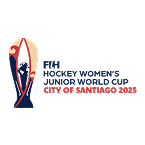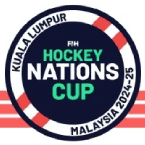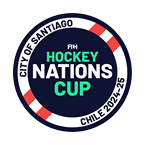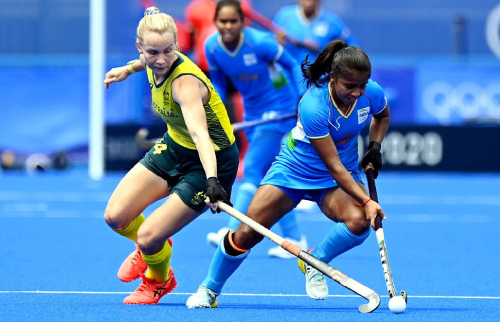
As he’s just completed his first year at the helm of hockey’s world governing body, Tayyab Ikram shares his thoughts about his first twelve months as FIH President and gives an update on the ongoing works and projects of FIH.
A year after you started your Presidency, which message do you have for the National Associations around the world?
I’m full of gratitude towards the National Associations (NAs) for their confidence in me and during my first year of Presidency. They have been much closer to me than before. Same goes for the athletes, with whom I had a lot of insightful interactions. I’m very thankful to them too.
I would also like to add the following: all the stakeholders and NAs members of FIH must develop the sport in the most honest, transparent, ethical and credible way. In my more than 45-year sports career, I’ve always ensured that honesty, transparency, ethics and credibility are never ever compromised. This is inherent to my work and personal ethics.
As soon as you started your mandate, you made a point in regularly interacting with all hockey stakeholders. What are your main learnings from these encounters?
For me, it was – and still is – crucial to listen to what all stakeholders of the hockey community – first and foremost the athletes – as well as those of the Olympic movement have to say. We are privileged to have a truly engaged and committed community in hockey, that we at FIH have a lot to learn from!
Meeting with the National Associations (NAs), listening to their development challenges and opportunities, got me even more convinced that a face-to-face interaction is much more effective!
It also confirmed that NAs need to present themselves in a better way towards their local authorities and National Olympic Committees to secure more resources locally.
From my interactions with the NAs, it is clear that some of them have a much better development roadmap than others. Therefore, we need to balance this situation to prepare them to receive our resources. Similarly, attending continental Congresses was much better to understand their priorities and roadmaps, see if they are aligned with FIH or rather have FIH be more flexible to get them on board.
I also had really good exchanges with other International Federations (IFs) from which I can conclude that, whilst we’re doing good, some IFs are ahead of us and we can learn from them too.
With the development of hockey being FIH’s number one mission, FIH has launched – under your initiative – a comprehensive “Empowerment and Engagement” strategy. What do you want to achieve with it?
If we want to keep on performing and being a major sport internationally, we have to grow! There’s no question about that. Articulated around four main pillars (more places to play, a boost to coaching, more opportunities to compete and more tools to empower Continental Federations and National Associations), the strategy, which, quite symbolically, we decided to reveal at the IOC’s Olympic House in June, establishes the framework to reach that top-priority objective.
Immediately after the launch, we went onto the implementation phase. It was very important for me to explain at the Continental Federations (CFs) Congresses the details of the strategy - which need to mirror the needs of the NAs of course - and also advise NAs on how they can apply to benefit from it.
Increasing resources – especially financially – is challenging. What are your plans to improve this?
In an environment which is so competitive, with so many sports – including new ones or new formats – and entertainment opportunities nowadays, it’s of course no easy task. And with the global pandemic having severely impacted the corporate world, this increases our challenge even further.
What we need in the first place is to increase the number of hockey participants and the fanbase around the world. Both are of paramount importance in order to be attractive for potential partners. Luckily, we have some really strong assets: an Olympic sport, a fully gender equal sport (51% of the overall participants are women, 49% men), a sport played on all continents, a sport providing a very safe environment for participants and their families, a sport with strong values such as respect and fair-play, and so on. The potential is definitely there.
Overall, I think we’ve done a good job in presenting our sport to our internal and external audiences but we still need to improve that and meet the pace of today’s top-level international sporting events’ presentations.
Is Hockey5s an option to increase participation and fanbase?
Hockey5s is a fantastic opportunity for many people to join hockey. In many places around the world, it’s challenging to get the material and human resources needed to play our sport. Hockey5s provides a wonderful solution to that. It is therefore a great opportunity to increase participation. And it is indeed a wonderful asset to grow our fanbase too, very much like other sports have done with shorter formats.
We’ve seen this happening already with new teams participating in the Qualifiers of the FIH Hockey5s World Cup, some of them even qualifying for this World Cup! This is very stimulating. Needless to say that the very first edition of the FIH Hockey5s World Cup in January in Oman is really exciting!
Furthermore, we are closely monitoring to improve Hockey5s in a way where our players’ safety and welfare remain a priority.
The FIH Executive Board has just approved the creation of a FIH Hockey Nations Cup 2. Why has this new competition been created?
A couple of years ago, FIH created the Nations Cup for the teams ranked just below the FIH Hockey Pro League teams. This was a good decision, proven by intense and thrilling matches in both tournaments! But FIH is not only there for the top nations. Our mission is to support all 140 National Associations as much as we can. Thanks to this Nations Cup 2, created in the aftermath of consultation meetings with National Associations, teams ranked below the Nations Cup ones will have the possibility to regularly play a top-flight international tournament and therefore grow!
The Olympic Games Paris 2024 are coming soon. How do you look at hockey’s position within the Olympic movement?
As I mentioned earlier, being an Olympic sport – since 1908! – is a major, major asset for hockey! Beyond our own events, the Olympic Games give hockey a huge exposure. But we are not here only to receive from the Olympics. We also have to give back. One way to do so is to be very active within the Olympic movement. Personally, I have regular meetings with IOC President Thomas Bach and members of the Olympic movement. I’ve recently been appointed as a Member of the IOC Coordination Commission for the Olympic Games Brisbane 2032. We staged our Executive Board meeting in June at the Olympic House. Other key hockey personalities are members of the Olympic movement. This involvement is fundamental.
How can hockey contribute to a more sustainable world?
This is a really important point! Top hockey events have been played in the last decades on a watered turf. With water sadly becoming more and more scarce, this just has to stop. FIH already engaged with the turf manufacturers members of our Quality Programme some years ago and I’m really glad that, thanks to their efforts and after consultation with athletes, we will soon be able to play our events on non-watered turf. I was also very much behind the launch of our “Give back to forest” initiative, consisting in planting thousands of trees all around the world.
But sustainability doesn’t stop with environmental considerations. Beyond the respect of the planet, the FIH sustainability strategy includes two other main pillars: people and prosperity. In this regard, the whole hockey community must do more in terms of diversity and inclusion, especially when it comes to participation. This is also key for our growth.























